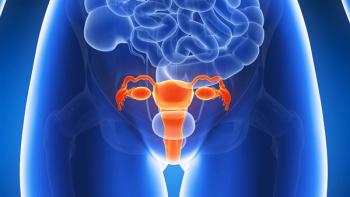
Shining a Light on Resistance to Breast Cancer Treatments
New research suggests that exposure to dim light at night may cause breast cancer patients to become resistant to certain types of therapy.
Steven M. Hill, PhD
New research suggests that exposure to dim light at night may cause breast cancer patients to become resistant to certain types of therapy.
Research presented at the 13th Annual AACR Conference on Frontiers in Cancer Prevention has shown that rats bearing human breast tumors became resistant to doxorubicin when they were exposed to dim light at night. This study builds on a previous study, which found that rats bearing human breast tumors became resistant to tamoxifen when they were also exposed to dim light at night.
In both cases, resistance was overcome by giving the rats melatonin at night.
“Although our research is very promising, it is not at a point where we can make recommendations to breast cancer patients taking either tamoxifen or doxorubicin about melatonin supplementation,” Steven M. Hill, PhD, professor of structural and cellular biology and the Edmond and Lily Safra chair for breast cancer research at Tulane University School of Medicine in New Orleans, said in a statement.
“Instead, because melatonin is produced by our bodies at a very specific time of day, exclusively during darkness at night, we can recommend that patients follow a natural light/dark cycle as much as possible, try to sleep or stay in a completely dark room during the night, and/or use a sleep mask. Taking melatonin supplements at the wrong time of day would potentially disrupt the natural melatonin cycle, which may, in itself, impair breast cancer responsiveness to tamoxifen and doxorubicin.”
For the doxorubicin study, Hill and his colleagues analyzed rats exposed to 12 hours of normal light followed by 12 hours of dim light with half of the rats receiving melatonin supplementation during the dim-light period (nighttime).
Tumor growth in rats that did not receive nighttime melatonin supplementation was 2.8-fold faster compared with tumor growth in rats receiving nighttime melatonin supplementation. Also, tumors in rats that did not receive nighttime melatonin supplementation were completely resistant to doxorubicin, whereas tumors in rats given nighttime melatonin supplementation were sensitive to doxorubicin and regressed rapidly.
Hill and his colleagues were able to identify two possible molecular mechanisms that would explain why the dim light exposure caused doxorubicin resistance.
“When we analyzed tumors from rats that did not receive nighttime melatonin supplementation, we detected substantially increased levels of two enzymes that break down doxorubicin to a less active form and significantly elevated levels of membrane proteins that transport doxorubicin out of cells, compared with tumors from rats receiving nighttime melatonin supplementation,” said Hill.
“Tumors from rats receiving nighttime melatonin supplementation had lower levels of these enzymes and transporters,” Hill continued. “So we think that melatonin helps maintain high levels of active doxorubicin in the cancer cells, whereas suppression of circadian melatonin production by exposure to light at night has the opposite effect.”
In the tamoxifen study, Hill and colleagues analyzed rats living in either normal light/dark conditions, with 12 hours of light followed by 12 hours of complete darkness, or conditions in which there were 12 hours of normal light followed by 12 hours of dim light. Melatonin levels in the blood of rats living in normal light/dark conditions rose during the dark period before decreasing again during the light period. In rats living in the dim night light conditions, melatonin levels remained low throughout the light/dark cycle.
Tumor growth in the rats living in the dim night light conditions was 2.6-fold faster compared with tumor growth in rats living in normal light/dark conditions. Further, tumors in rats living in dim night light conditions were completely resistant to tamoxifen, whereas tumors in rats living in normal light/dark conditions regressed significantly. If rats living in dim night light conditions were given a nighttime melatonin supplement, their tumors regressed.
“These data suggest that, in the not-too distant-future, it may be possible to combine melatonin and tamoxifen,” Hill said. “However, before this is done we would need to identify the optimal times of day to give the two because if the timing between the two is off, the advantage of giving them in combination may be lost.”
Newsletter
Knowledge is power. Don’t miss the most recent breakthroughs in cancer care.















































































